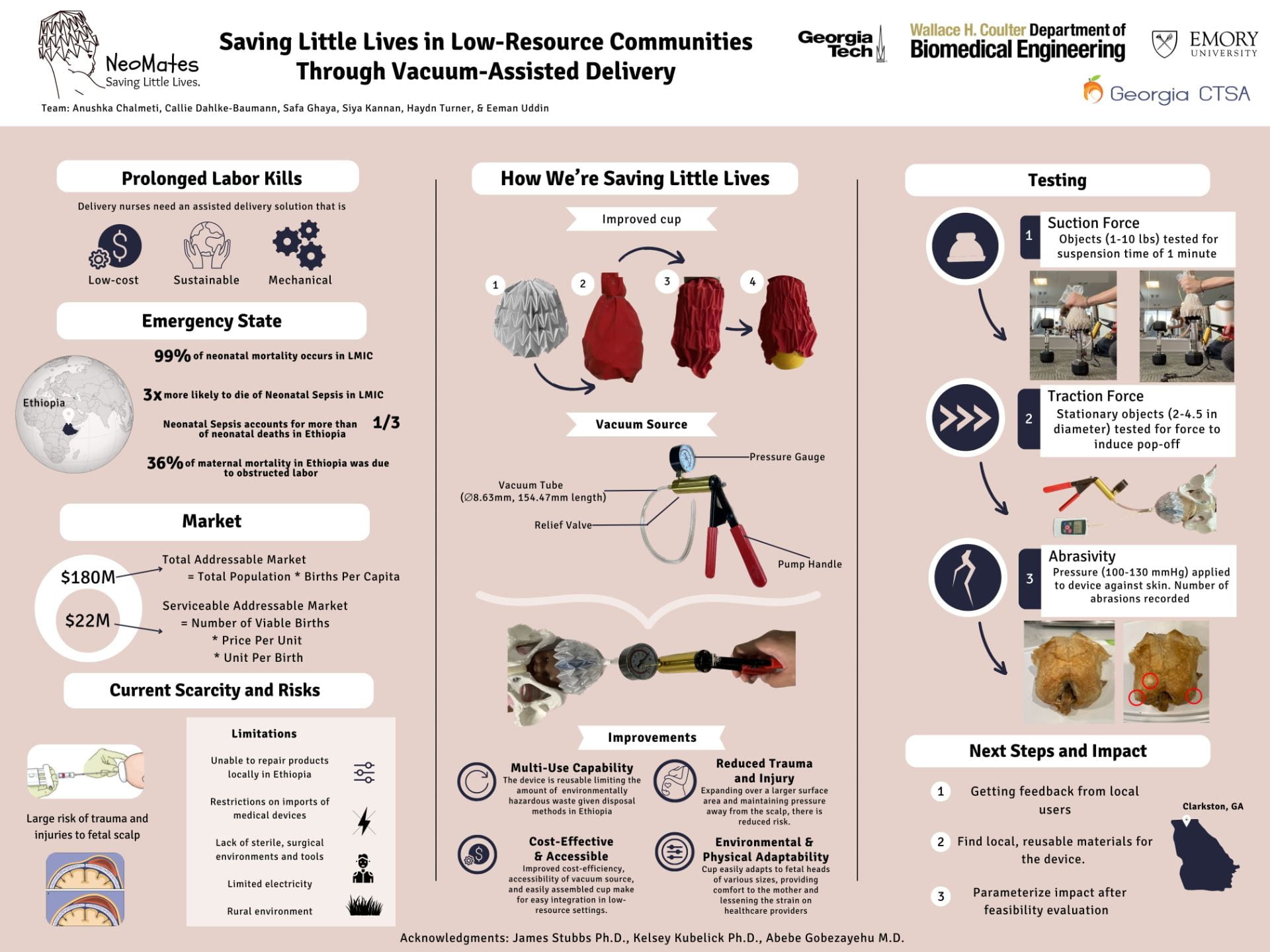Get to know our team on LinkedIN:
Anushka Chalmeti, Callie Dahlke-Baumann, Safa Ghaya, Haydn Turner, Eeman Uddin, Siya Kannan
NeoClutch
Improve vacuum delivery devices in Ethiopia to decrease vertical neonatal sepsis transmission.
Project Description:
Neonatal sepsis is a public health crisis in Ethiopia, causing >30% of infant deaths. The risk of vertically transmitting sepsis from a parent to a newborn is high, especially when access to antibiotics is limited, there is a delay in seeking medical support after contracting sepsis, and in cases with prolonged labor times. Therefore, there is an urgent need for a preventive biodevice to reduce transmission of sepsis during labor in Ethiopian primary-health facilities. The current method of delivering babies in Ethiopia involves using a bike pump to create negative pressure in a ventouse cup that is attached to the baby’s scalp while in the birth canal. However, these traditional vacuum-assisted delivery devices (VADD) often pressurize the fetal scalp, leading to trauma such as hematoma, are single-use, and have a high risk of failure, pushing for riskier alternatives like C-sections. Our proposed design works through a pressure-based radial contraction mechanism by incorporating a unique origami structure enclosed in an airtight membrane. By connecting this structure to a brake bleeder, negative vacuum pressure contracts the origami structure, which can reduce the structure’s volume by >90%, allowing for a firm grip on the baby’s scalp and providing a safer alternative for neonates. Our device is designed to facilitate faster delivery times by reducing the rate of failure of the device. The most beneficial aspect of the EggStractor is its purely mechanical nature, making it accessible, repairable, and reusable for low-resource communities at a fraction of the cost per use of current devices. When looking at the market our product could impact, we found our total addressable market to cover a cost of $180M and a serviceable addressable market to be $22M. This device has the potential to revolutionize the delivery of safe and effective childbirth in low-resource settings, saving little lives.



